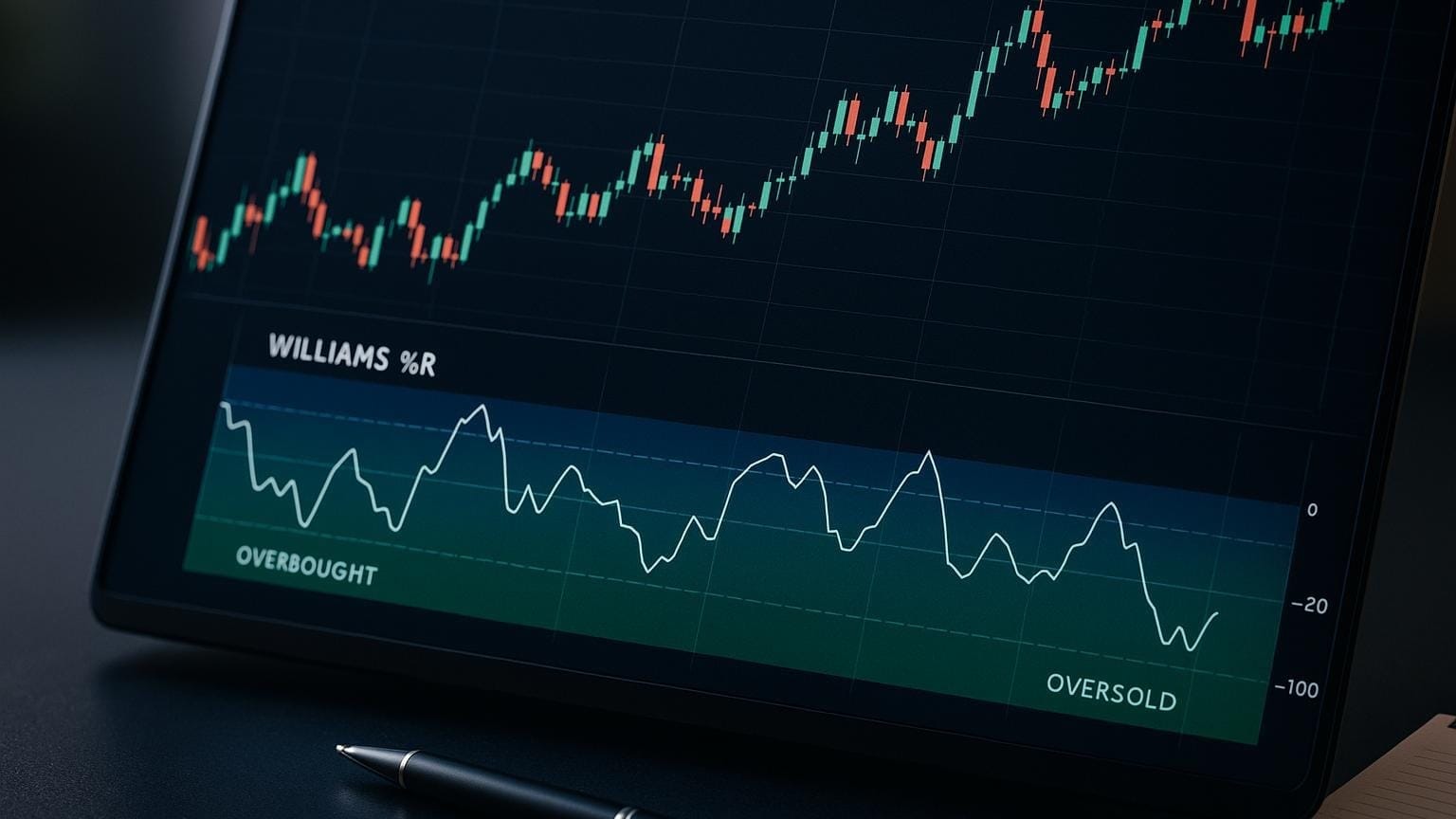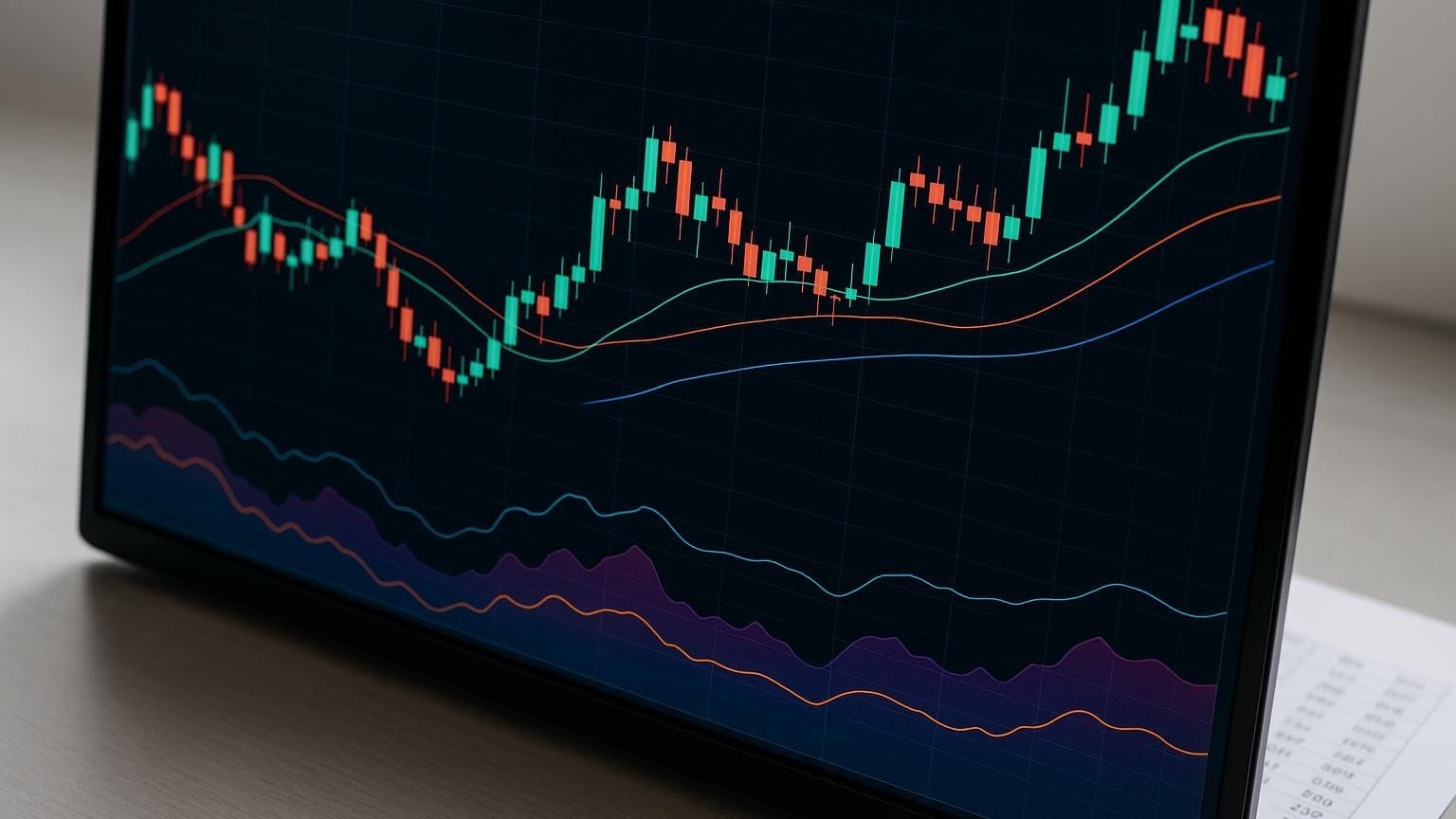Explore the advantages of retail prop trading, including access to capital, reduced risk, and professional growth opportunities in a supportive community.
Trading with retail prop firms offers individual traders access to larger capital, reduced financial risk, and a structured trading environment. These firms are reshaping the trading landscape by providing resources that were once only available to institutional traders. Here's why this model is gaining traction:
- Access to Capital: Trade with accounts as large as $200,000 after passing evaluations, enabling broader strategies and better risk management.
- Risk Mitigation: Firms absorb losses beyond the evaluation fee, creating a safer trading setup.
- Profit-Sharing: Keep 70–90% of profits, offering higher earning potential compared to solo trading.
- Skill Development: Structured feedback, analytics, and mentorship help traders refine strategies and build discipline.
- Community Support: Collaborative environments reduce isolation, promote learning, and improve decision-making.
This model allows traders to focus on performance, strategy, and growth without the financial strain of trading solo. Whether you're new to trading or looking to scale up, retail prop firms provide a pathway to professional-level opportunities without risking personal capital.
Should You Trade With a Prop Firm? | Trading Thoughts Podcast (Ep.2) – JeaFx
1. Access to Large Capital
One of the biggest draws of retail prop firms is the opportunity to trade with significantly more capital than most individual traders have at their disposal. While many traders rely on their personal savings—often ranging from a few thousand to tens of thousands of dollars—prop firms provide access to much larger sums, opening up entirely new possibilities.
Today, many prop firms offer traders the chance to manage accounts as large as $200,000 after passing an evaluation process [1]. This kind of access enables traders to execute strategies that require larger positions and to spread their trades across different markets, something that’s often out of reach with personal funds.
What’s even more enticing is the potential for account growth. Traders who perform well can start with a $10,000 account and, over time, scale up to $25,000, $50,000, $200,000, or even more. This progression is based purely on merit, requiring no additional financial input from the trader [1].
Prop firms also offer a structured way to grow trading capital. Instead of risking their own money to build larger accounts, traders benefit from well-defined plans for scaling up. Many firms even allow traders to take their time during evaluations, removing the stress of tight deadlines. With "no time limit" evaluations now common, traders can focus on showcasing their skills at their own pace [1]. For background on how professional firms operate, see this overview of traditional proprietary trading.
2. Risk Mitigation and Evaluation Model
Retail prop firms take on the bulk of the financial risk by limiting what traders are exposed to, typically through an evaluation fee ranging from $100 to $500 [5]. This setup creates a buffer, ensuring that any losses impact the firm’s capital rather than your personal finances. Learn more about maximum drawdown to better frame risk.
To complement this safety net, these firms require traders to prove their ability to manage risk effectively. The evaluation process is designed to both protect the firm and prepare traders for real-world trading. This multi-stage process—often including simulation, live, and funded phases—helps traders demonstrate consistent profitability while adhering to strict risk management practices [4]. It’s a structured way to build disciplined trading habits without putting personal funds on the line.
Prop firms also use automated controls to further safeguard their capital. These systems enforce rules like daily loss limits, maximum drawdown thresholds, position size caps, and mandatory stop-loss orders [4][2]. For example, many firms set daily loss limits at around $1,000 and maximum drawdowns at 5–10% of the account balance [6].
In 2024, FunderPro, a U.S.-based prop firm, introduced a daily loss limit of $1,000 and a maximum drawdown of 10% for funded accounts. If traders exceeded these limits, they were automatically blocked from trading for the rest of the day. This policy not only protected the firm’s capital but also shielded traders from further losses. After implementing these controls, FunderPro reported a 23% drop in account blow-ups [3].
One of the standout advantages of this system is its automated risk management. Unlike retail traders, who may let emotions cloud their judgment and break their own rules, prop firms use automated systems and dedicated risk managers to step in when limits are breached [6]. This reduces impulsive decisions and fosters a more stable trading environment.
3. Professional Structure and Discipline
Trading with a retail prop firm isn’t just about access to capital or managing risks—it’s about stepping into a professional environment that mirrors the intensity and discipline of institutional trading floors. This structured setting is designed to push traders toward consistent performance and ongoing improvement.
Prop firms enforce a rule-based framework that keeps traders accountable. This includes adhering to defined trading hours, sticking to position-sizing limits, and following specific strategy guidelines. Traders are also expected to maintain detailed journals and submit performance reports regularly. These practices reinforce the principles of risk management and capital growth mentioned earlier. For ideas on journaling formats, see this primer on maintaining a trading journal.
To ensure optimal performance, advanced analytics are often employed. Metrics like win rates, trade duration, risk-adjusted returns, and drawdown patterns are closely monitored. This kind of data-driven feedback helps traders quickly identify and correct emotional or impulsive decisions, fostering a professional atmosphere where strategies are continuously refined. You can browse market insights for examples of metrics and practical context.
The environment within a prop firm also plays a big role in maintaining discipline. Being surrounded by other funded traders, all striving toward similar goals, creates a sense of healthy competition. Many traders find that this peer-driven dynamic enhances their focus and helps them stick to their trading plans more effectively.
Another major advantage is the structured feedback loops offered by these firms. Regular performance reviews conducted by experienced traders or risk managers provide valuable insights. These reviews often highlight blind spots in a trader’s approach and offer actionable advice to strengthen their strategies. This kind of mentorship accelerates the development of disciplined habits that might otherwise take years to cultivate.
Finally, the firm’s strict performance standards help build mental toughness, improve decision-making, and reduce impulsive trades. These disciplined practices set the stage for the profit-sharing and growth models that follow.
4. Profit-Sharing and Earnings Potential
Profit-sharing models open up significant earning opportunities for traders. Unlike traditional trading, where your income is tied to the limits of your own capital, prop firms provide access to larger funds and generous payout structures, allowing for much higher earning potential.
Most retail prop firms operate on a profit-sharing model, typically offering traders between 70% and 90% of the profits they generate. This setup not only allows traders to take home a large share of their monthly gains but also provides room for growth. As traders demonstrate consistent performance, their account sizes can grow from $50,000 to $100,000 or more, directly increasing their earning potential. This system encourages disciplined trading while working hand in hand with the structured environment that prop firms create. For a primer on how these arrangements work, see this explainer on proprietary trading.
Many firms also use a performance-based progression system, which rewards traders for maintaining consistent results and adhering to risk guidelines. Traders who keep drawdowns low and achieve steady returns often qualify for higher profit-sharing ratios. For example, some firms bump payouts from 80% to 85% or even 90% for their top performers, creating a system that directly rewards skill and improvement.
Another advantage is the predictability of monthly payouts. Regular withdrawals help traders separate their income from their trading capital, easing financial stress. This separation reduces the emotional pressures that can lead to impulsive decisions, allowing traders to focus on strategy and execution.
5. Skill Development and Professional Growth
Trading with a retail prop firm can fast-track your growth by combining strict rules with the reality of managing actual capital. This kind of setup pushes traders to quickly adopt disciplined habits essential for long-term success.
The built-in accountability structure is a game-changer. Unlike trading your own money, where emotions can sometimes lead to poor decisions, firm oversight enforces discipline. Breaking rules or taking excessive risks isn’t an option, which means you’ll stick to your strategy and make smarter choices.
Key elements like strict loss limits, drawdown rules, and position sizing requirements sharpen your ability to assess risk and reward. You'll learn to cut losses quickly and manage trades more effectively. On top of that, detailed analytics provide valuable insights into your performance. For instance, you might notice you’re consistently profitable with certain currency pairs but struggle with others. Or, maybe your win rate dips during specific market hours. This kind of data helps you fine-tune your strategies and focus on what works best. Understanding the risk-to-reward ratio is especially helpful here.
Regular performance reviews also boost self-awareness, helping you avoid common pitfalls like revenge trading or overtrading. Many traders find that this heightened awareness not only improves their prop trading but also enhances their personal trading habits.
Finally, the structured progression system within these firms gives you clear milestones to achieve. Each step forward becomes an opportunity to grow, turning challenges into stepping stones for measured improvement.
6. Community, Support, and Networking
One of the standout benefits of working with a prop trading firm is the chance to be part of a vibrant trading community. Unlike the often solitary experience of trading from a home office, these firms create a collaborative environment where traders of all experience levels share insights and strategies. This sense of community can be a game-changer for both personal and professional growth.
Mentorship is a key feature, pairing you with experienced traders who can help refine your strategies and guide you through the emotional highs and lows of trading. Having someone who’s already navigated the challenges you’re facing can save you from costly mistakes and significantly speed up your learning curve.
Prop firms also offer access to resources like specialized webinars, live market analysis sessions, and advanced training materials—all included as part of the program. This is a major advantage compared to purchasing similar educational content on your own, which can be both expensive and time-consuming.
The peer-to-peer environment is another valuable aspect. It fosters accountability and discipline while providing real-time feedback on your trading strategies. Observing how seasoned traders handle various market conditions offers practical lessons you can apply to your own approach.
Beyond the firm itself, online communities—through platforms like Discord, forums, and virtual meetups—allow traders to exchange market insights, discuss trade setups, and build lasting professional relationships. Many traders find that these connections lead to collaborations and open doors to new opportunities throughout their careers.
Engaging with such a supportive network isn’t just about camaraderie; it has tangible benefits. Industry data suggests that active participation in trading communities improves both retention and profitability [3]. The combination of mentorship, peer interaction, and access to professional resources creates a well-rounded support system that’s hard to replicate when trading alone.
7. Simulating Prop Firm Conditions with LuxAlgo AI Backtesting Assistant

The structured environment of retail prop firms can be a tough challenge for traders, but simulation platforms now make it possible to practice under similar conditions. The LuxAlgo AI Backtesting Assistant helps you recreate the strict parameters and mental demands faced during real prop firm evaluations. This prepares you to sharpen risk management and build the discipline necessary for success.
Traditional demo accounts often fall short because they lack the structured rules that prop firms enforce. LuxAlgo’s AI Backtesting lets you set parameters like daily loss limits, maximum drawdown thresholds, and profit targets—the same kinds of constraints used in prop firm evaluations. For instance, if you're preparing for a challenge with a $50,000 starting balance, a 5% maximum drawdown, and a $3,000 profit target, the assistant can replicate these conditions using historical market data.
The psychological benefits of this approach are substantial. Studies show that over 80% of traders fail prop firm challenges due to poor discipline or inadequate risk management [6]. By simulating these real-world constraints, you can practice staying within loss limits, handling drawdowns, and keeping your cool during tough periods—all without risking actual money.
The platform goes beyond basic simulations by providing detailed analytics, including win/loss ratios, risk-to-reward metrics, and equity curves. These insights reveal patterns that could lead to rule violations, helping you refine your strategy. In fact, traders who use structured backtesting and simulation platforms tend to achieve better evaluation outcomes. For a refresher on the concept of an equity curve, see this reference.
| Feature | LuxAlgo AI Assistant | Standard Demo Account |
|---|---|---|
| Prop Firm Rule Simulation | Yes | No |
| Customizable Risk Parameters | Yes | Limited |
| Performance Analytics | Comprehensive | Basic |
| Psychological Pressure Training | Yes | Minimal |
With LuxAlgo AI Backtesting, you can configure your target firm's parameters, select historical market data, and run systematic backtests. Plans & pricing: Free Plan ($0, lifetime access) includes the Library and resources across platforms; Premium ($39.99/month) provides advanced signals, overlays, and oscillator features for TradingView; Ultimate ($59.99/month) includes access to the AI Backtesting platform at luxalgo.com/backtesting. Explore additional documentation in the Backtesting Assistant docs.
Treat these simulated sessions seriously—just like real evaluations. Stick to strict discipline, document your decisions, and use the insights to bridge the gap between theory and live trading. This kind of preparation can give you a real edge when it’s time to face prop firm challenges.
Comparison Table
Here's a closer look at how personal trading stacks up against trading with retail prop firms:
| Factor | Personal Retail Account | Retail Prop Firm |
|---|---|---|
| Starting Capital | Limited to the trader's personal funds | Access to significant capital provided by the firm after passing an evaluation |
| Maximum Risk Exposure | Entire investment is at risk | Risk is usually capped at the evaluation fee |
| Profit Split | Trader keeps 100% of gains | Earnings are shared, with a large portion going to the trader |
| Monthly Earning Potential | Limited by the size of the personal account | Higher potential due to access to larger capital |
| Drawdown Limits | Managed solely by the trader | Strict limits are enforced to safeguard capital |
| Daily Loss Limits | No formal daily restrictions | Clear daily loss thresholds promote disciplined trading |
| Professional Structure | Independent decision-making with minimal oversight | Rules-driven environment with regular monitoring |
| Educational Support | Limited resources, often broker-provided | Structured training in risk management, psychology, and strategy |
| Community Access | Primarily through forums and social media | Direct mentorship and active trader networks |
| Withdrawal Frequency | Flexible, based on the trader's discretion | Regularly scheduled payouts |
This side-by-side comparison highlights the strengths of trading with a prop firm versus managing a personal account.
Personal accounts often restrict earning potential because traders rely solely on their own capital. Losses can also wipe out an entire account if not managed carefully. On the other hand, prop firms provide access to larger funds, allowing traders to aim for higher returns while limiting personal financial risk to an evaluation fee.
The structured environment offered by prop firms is another key advantage. Enforced drawdown and daily loss limits help traders develop disciplined habits and avoid significant losses. Additionally, the training and mentorship available through these firms can help traders sharpen their skills and make more informed decisions.
When it comes to scaling, the difference is stark. Growing a personal account requires consistent, high returns over a long period, which is challenging even for experienced traders. In contrast, prop firms offer immediate access to substantial capital once traders pass their evaluations, making it easier to scale up quickly. This combination of resources, risk management, and structure positions prop firms as a compelling option for traders looking to grow and succeed. For practicing scaling rules safely, you can rehearse on LuxAlgo’s AI Backtesting before committing to a live challenge.
Conclusion
Trading with a retail prop firm opens doors that can reshape a trader's career. One of the biggest perks? Access to substantial capital—often exceeding $100,000—without needing to rely solely on your own funds. This kind of financial backing is a game-changer for traders aiming to operate at a higher level.
Another major advantage is the reduced financial risk. With only a modest evaluation fee required, traders can step into professional trading without the looming fear of significant personal losses. This safety net allows for a more focused and confident approach to the markets.
Prop firms also provide a structured environment that promotes discipline and consistent performance. For many traders, this structure removes the stress of setting and enforcing their own trading standards, which can be a challenge when trading independently.
The profit-sharing model is another highlight. With a typical 70% profit split on larger accounts, the income potential far surpasses what most could achieve trading with limited personal funds.
Beyond the financial benefits, the sense of community and access to mentorship provided by prop firms can be invaluable. These resources help traders grow faster by shortening the learning curve and providing guidance that might otherwise take years to acquire. Simulation on LuxAlgo AI Backtesting allows traders to practice under realistic conditions, refine strategies, and develop the discipline needed to thrive in a funded trading environment.
FAQs
What is the evaluation process like when trading with a retail prop firm, and what do you need to pass?
The evaluation process at a retail prop firm is centered around a trading challenge designed to test your skills and discipline. To succeed, traders must hit specific profit targets—typically between 6% and 15% of the account balance—while sticking to strict risk management rules. These rules often include limits on maximum drawdowns and position sizes. See this risk management resource to prepare.
Evaluation periods generally last 30 to 60 days, during which you’ll operate in real market conditions. Passing the challenge requires consistent profitability, effective risk management, and adherence to the firm’s trading guidelines. If you meet these criteria, you’ll gain access to a much larger pool of trading capital provided by the firm. This setup allows you to trade at a higher level without putting your own money on the line. You can also rehearse rules using LuxAlgo AI Backtesting.
What mentorship and community support do retail prop firms offer to traders?
Retail prop firms offer traders a wealth of mentorship opportunities and community support to enhance their chances of success. These firms often provide access to training programs, educational resources, and webinars led by seasoned professionals. Beyond the formal training, many firms encourage interaction through forums, peer groups, and networking events, giving traders a chance to share strategies and insights.
On top of that, traders can gain valuable guidance from experienced mentors. This personalized support helps refine their skills, boosts confidence, and equips them to tackle the challenges of trading in a professional setting. Together, these resources create an environment where traders can learn, connect, and work toward their goals. Explore ongoing market insights for continuous learning.
What are the earning and risk management advantages of the profit-sharing model used by retail prop firms compared to traditional trading?
Retail prop firms operate on a profit-sharing model, where traders often retain 80–90% of their earnings. Compared to traditional trading—where fees and commissions can significantly cut into profits—this setup allows traders to enjoy a much larger share of their success. It’s a structure that directly rewards performance, making it especially appealing for skilled traders.
When it comes to risk management, these firms shoulder the financial risk. Traders are only required to pay an evaluation or training fee, which means their exposure to losses is minimal. In contrast, traditional trading often places the full burden of market losses on the individual. This blend of higher earning potential and limited risk encourages disciplined strategies and provides a supportive environment for traders to grow. If you want to model these constraints in advance, try LuxAlgo’s AI agent for creating trading strategies.
References
- LuxAlgo AI Backtesting Assistant
- LuxAlgo (homepage)
- Risk Management (Library)
- Traditional Proprietary Trading – An Insider’s Guide
- Backtesting Assistant Documentation
- Market Insights (Blog)
- Saving Strategies in the AI Backtesting Assistant
- Simulate Prop Rules with AI Backtesting
- LuxAlgo Blog
- LuxAlgo Library
- Practice Scaling with AI Backtesting
- AI Backtesting: Plans & Access
- Documentation: Getting Started
- Model Evaluation Constraints
- Rehearse Challenge Parameters
- External Resources
- Understanding Maximum Drawdown (Investopedia)
- How to Keep a Trading Journal (Investopedia)
- Proprietary Trading Explained (Investopedia)
- Risk-to-Reward Ratio (Investopedia)
- What Is an Equity Curve? (Investopedia)








